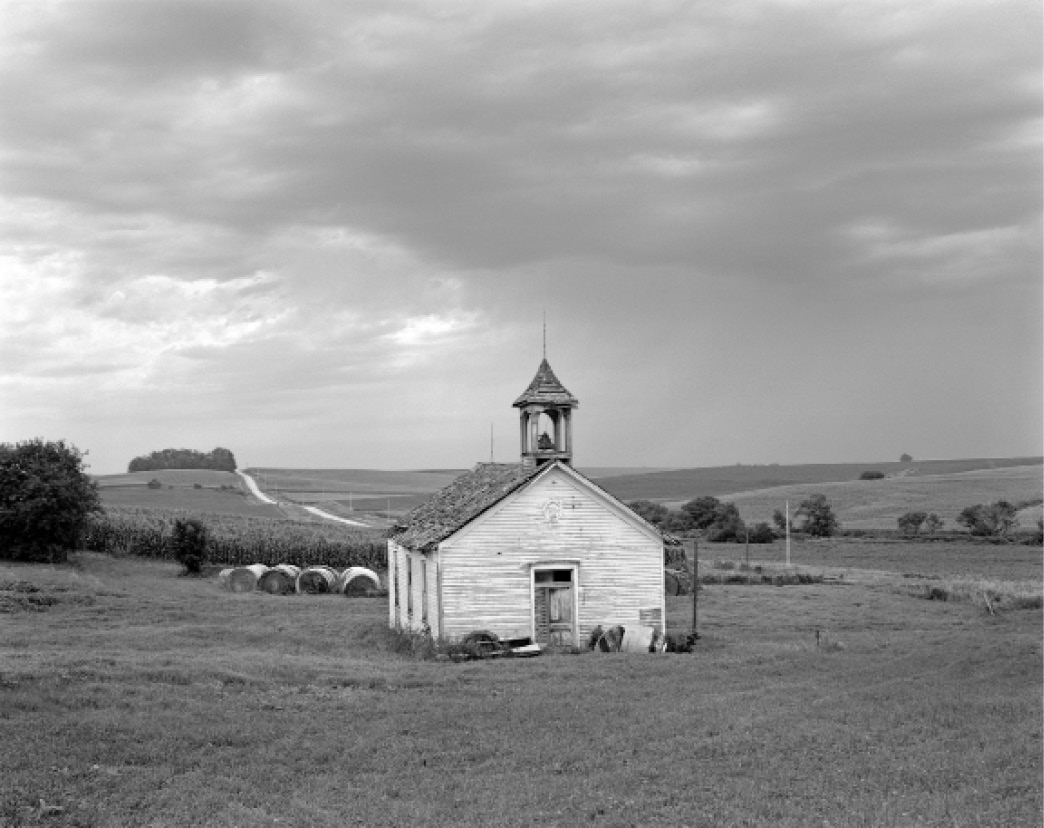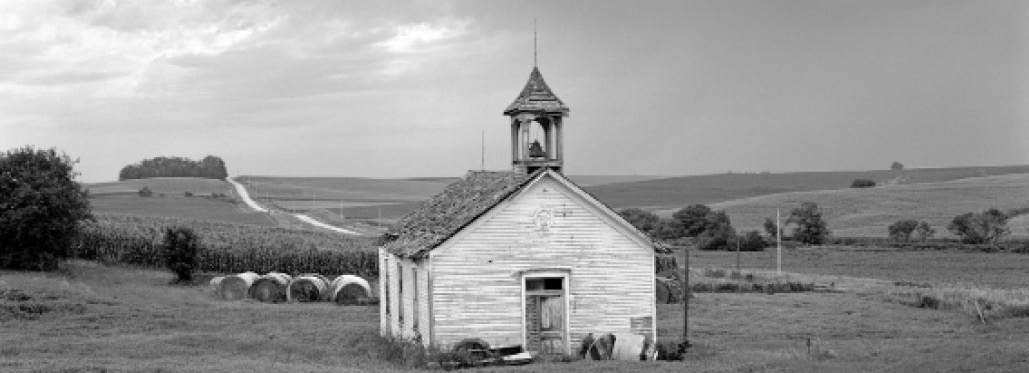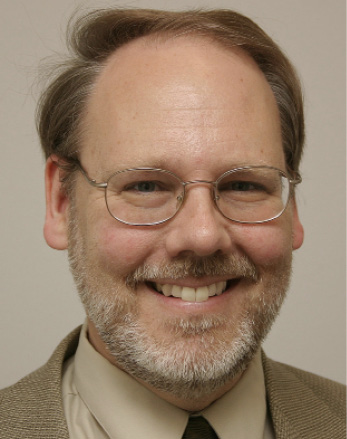I still love to listen to the “News from Lake Wobegon” on Garrison Keillor’s A Prairie Home Companion every Saturday night. Mr. Keillor’s droll yet often sharp narratives of life in a small middle land town continue to amuse and comfort me after all these years. Over those years, the phrase “prairie home” has resonated more deeply, more acutely in my imagination, my heart, maybe my soul.
For two years in the late 1990s, I lived in the northern prairie region in Moorhead, Minnesota, the Red River of the North serving as the good fence with our neighbor Fargo, North Dakota. Tucked in the middle of Moorhead, not six blocks from my house, was the Prairie Home Cemetery, from which Mr. Keillor himself says he derived the name for his radio program after a 1971 reading at Moorhead State University (the institution where I taught at the time I lived there). It’s an old Norwegian graveyard, and in fact the house my family and I lived in in Moorhead was connected to one of those buried there. Our beautiful 1925 Dutch Colonial was built by Bottolf T. Bottolfson, an ophthalmologist and two-term mayor of the town. (The “T” stands for Thomas, in welcome serendipity). A small, tarnished brass plate engraved with “Bottolfson” still sat above the house’s doorbell, which we of course left on. Once we found out the mayor was buried in Prairie Home, my family and I could not resist the urge to wander the field of grave markers in the cemetery until we found and paid our respects to our home’s builder and his wife, Jeanette.
Prairie as home is an evocative idea that extends beyond my brief two years in Moorhead, and even my many years of Saturday-night appointment radio. As my life’s years have marched on, “prairie home” has become a phrase, an idea, and increasingly a reality that has compelled, even called me more and more. It has been a yearning, a longing as well as a comfort, even solace. Now, today, I know deep within me that prairie is my home.
But how can this be? How can the prairie be my home? I hail from Rockford, Illinois, a western outpost of the Rust Belt. As I grew up in that city of 150,000 during the 1960s and 1970s, Rockford’s industrial base collapsed, sending it into an economic spiral from which it has yet to recover. My childhood landscape was not one of bluestem and coneflower, but of shuttering factories and spreading suburbs. My adult homes have all been Midwestern, but an academic career has brought me to cities and college towns that boast very little tallgrass within their borders: DeKalb, Madison, Milwaukee, East Lansing, Fargo/Moorhead, Iowa City.
Even had I grown up on a farm or in a small town “out on the edge of the prairie,” as Garrison Keillor would say, that “prairie” would have been corn or soybean fields. Here in Iowa, where I now live, the prairie is 99.9 percent extinct. Geographers and literary critics speak of home as a concept that has been ruptured in the late twentieth and twenty-first centuries, thanks to the multiple forces of technology, instant communication, mobility, and diaspora resulting from war, persecution, economic privation, environmental disaster, and so many other horrors of contemporary life. The great irony of the idea of “prairie home” is that the tallgrass prairie is almost certainly the most ruptured natural habitat in human history. With the replacement of prairie by modern agriculture, at no other time has humanity completely removed a functioning ecosystem and replaced it with another (dysfunctional) one.
And yet…
My psyche, my emotions, my mind’s eye, my imagination, my senses all pull me toward the prairie as home. Again, how can this be?
To be honest, I probably wasn’t specifically aware of what a “prairie” even was until my college years. Yet since I grew up in Illinois, flatness, horizon, and thunderheads piling high in the distance were imprinted on me as my foundational geography. Side oats gramma and blazing star would have been foreign notions to me, but the basic prairie architecture was pervasive in my childhood days. The natural world that our senses absorb in childhood become the template, the perspective from which we comprehend the universe. I am fortunate to have enjoyed a childhood in one place, unbroken by moves to new landscapes that can disrupt the deeper grounding that comes from consistency. I did not realize it until adulthood, but the prairie is, and always has been, strong in me.
Perhaps the most powerful imprint of the middle land on me, even more than the visual splendor of the horizontal, has been the smell of home—the odor of grass. I realized this most dramatically after having left land for water. I spent four years teaching in Milwaukee, Wisconsin—obviously a deeply Midwestern city, yet the lake effect was profound. Aside from the temperature modifications that Lake Michigan provided, I didn’t realize how this grand body of fresh water would affect the smell of the region, even miles inland. After a few years as a Great Lakes denizen, I had an interview for a teaching position at a small college back in my home state of Illinois. It was late spring. After the several-hour drive from Milwaukee, I arrived in Eureka, Illinois, stepped out of the car, and was immediately overwhelmed by the sweet, yellow aroma of early grass in the warm twilight. I called my wife, Susan, to let her know I had arrived safely, and I had to simply say, “It smells like grass.”
I know that I wasn’t smelling native prairie grasses, and today’s characteristic rural plant odor is corn. But I think there’s a fundamental commonality among graminoids, and corn is a grass. Just as the visual scaffolding of the gently undulating prairie terrain draws my eyes, the ur-aroma of grass pulls my nostrils toward the ground of home. We know we are home when we feel the rightness of our return. Although we did not end up moving there, my nose told me Eureka, Illinois, was right.
Throughout my whole life, the return has grounded me in my knowledge of prairie as home. The other beloved landscape in my life is the North Woods. Each year when I was a child, my family vacationed at “the lake” in Wisconsin, as did—and do—many Illinois denizens. For several years, “the lake” changed every year or two, moving ever northward, until we found our beloved spot on Tomahawk Lake in the North Woods. The lovely, dark, and deep woods of pine, birch, and fir, with its own sweet umber smells of needles and sap, in truth made a more immediate, direct imprint on my nature memory in my younger years. More ready at my fingertips and less implicit than the essential shape and contour of the prairie, the woods continues today as my second terrain; my own family and I revel in our annual treks to the edge of Minnesota’s Boundary Waters.
On my childhood journeys northward, the fields and meadows of Illinois and southern Wisconsin gradually grew sparser outside our family station wagon’s windows, giving way to stands of pine and birch as we plowed a furrow up the middle of the Wisconsin map. My and my brothers’ excitement grew less and less containable at the nearing prospect of lakes and lumber towns. The mirror image of that journey occurred two weeks later. Our appetite for northern adventure satisfied, the southerly trek was more somber. Yet as the woodsy America’s Vacationland morphed into America’s Dairyland, as we gradually entered the land of open cow pastures and cornfields, I felt an anchor of security pulling me gently. More than just a feeling of the familiar, this was a sense of well-being, a reassuring embrace of rightness.
Among my most potent memories of Wisconsin family vacations is piling out of the car, a bit stiff-legged, in our driveway at the end of our return journey and deeply inhaling the Illinois air of home—and it smelled like grass. The warmth on my arms and face was both literal and figurative, summer’s hot breeze gliding over my body and home’s balm of rightness centering in my chest. That is when you know you have gravitated toward your geographical center.

Photograph: David Ottenstein
Minnesota writer Bill Holm in his masterful essay “Horizontal Grandeur” said, “There are two eyes in the human head—the eye of mystery, and the eye of harsh truth—the hidden and the open—the woods eye and the prairie eye. The prairie eye looks for distance, clarity, and light; the woods eye for closeness, complexity, and darkness. The prairie eye looks for usefulness and plainness in art and architecture; the woods eye for the baroque and ornamental.” Since childhood, the prairie and woods eyes have held nearly equal sway in my geographical vision. It’s not either/or for me. Yet I know exactly what Holm means and feels as he describes driving home at night from a claustrophobic visit to the woods of Ely, Minnesota, “when woods finally fell and plains opened up.” In the clear, moonlit night, Holm “saw for miles” and began singing at the top of his voice. “It was simply cataracts removed from the prairie eye with a joyful rush.”
Despite my love for the deep woods, I have felt the grounding of rightness, Holm’s relief in horizontal grandeur, throughout my adulthood as well as childhood. For two years, we lived in the south-central Lower Peninsula of Michigan—East Lansing, to be precise—a patchwork of fields and woods. Even now, nearly twenty years later, one of my most vivid memories of life in mid-Michigan is driving a particular spot south of town where you suddenly burst from wooded suburb to open farmland. Each time, I would feel my chest open and rise in almost palpable relief at the sweeping vista of fields as far as my prairie eye could see.
Over time, the feelings I have experienced when returning to the grassy flatness have resolved into better awareness and more conscious understanding. I have learned what a prairie really was—a complex, gorgeous ecosystem that is virtually extinct. Some of my teachers were literary—Willa Cather’s Jim Burden walking “straight on through the red grass and over the edge of the world, which could not be very far away,” or Paul Gruchow walking the recently burned Compass Prairie in Journal of a Prairie Year, marveling at the early blossoming spring big bluestem, the grasses’ ovaries “plump with seed” (44). But the best mentor has been the land itself. Visiting prairie restorations and preserves as an adult, I slide my hand up delicate stalks of bluestem, my palms tickled by the lacy seed heads. The gracefully arcing petals of shooting stars charm my eyes. The ecstatic champagne of the bobolink’s song bubbles in my ears. These are the prairie realities that I never knew as a child, now rendered materially for me on the horizontal canvas. I feel the at-easeness of home when I walk the tallgrass, like coming into a loving family I never knew I had.
But even as I walk the bluestem and breathe in mellow hints of prairie sage at the Hoover Prairie or Kent Park or Waterworks Prairie Park near my home in Iowa City, or even further afield at the Neal Smith National Wildlife Refuge in Prairie City, these isolated places are mere traces (even the eight thousand–plus acres of Neal Smith) of the vast integrity of the unbroken prairie of long ago. The daily living of my prairie home in my consciousness remains the shape and distance of the horizon and the smell of grass, writ broadly. Despite a strong prairie eye, I still have not arrived at an adequate answer to the question of how the prairie can anchor me in such a strong sense of home. Shapes and shadows of what once was do not make for a solid home’s foundation. Geometry is not geography. Remnants make for a poor residence.
Perhaps home lies in hope. At the end of the beautiful documentary film America’s Lost Landscape: The Tallgrass Prairie, anthropologist and Ioway Indian Lance Foster says, “There’s a circle, and someday anything that was at one time will again be. As traditional people, we believe that prairie is not dead. Prairie is alive. It may sleep, but underneath the invasive grasses, underneath the carved-up subdivisions, that land is still there. . . . Someday, this culture’s not going to be anymore. The culture that we live in is not going to always exist. But the prairie, as long as there’s one stem of grass somewhere, it’ll come back.” There is always the prospect that the prairie will return, and maybe dwelling in possibility is where we live best. Emily Dickinson says it is a fairer house than prose, and perhaps the poetry of the prairie can lead us to gather paradise. After all, if we think of home narrowly as family and household, none of our homes is perfect, yet we always strive for the ideal.
But honestly, I would rather be Walt Whitman, fetching the grass with full hands—I would rather “go to the bank by the wood and become undisguised and naked, I am mad for it to be in contact with me.” I would rather live in the now than a conditional future. Somehow, the prairie is home to me not only as a shape or an ideal but as a material reality, bounded in the hereness of dwelling. But, returning to my original question, how can that be when my home ground has been industrial cities and college towns, and when the native landscape as a whole is a mere specter anyway?
Frankly, I don’t have a definitive answer for you. I know in my heart and gut that the prairie is home for me because I feel it. I feel it whether I am reading and writing in my study, whether I am teaching in the classroom, or whether I am taking a walk by myself or with my family, be it on the bike trail along the creek near my home or through a nearby park or preserve. The feeling of home, however real and powerful, is ineffable, just as is its close cousin, the feeling of love.
For me, and maybe for you, “I feel it” is necessary but not sufficient. I still reach for something of matter. Where is that feeling emanating from, within the material? I believe that matter, that material, may be in roots. Even in its original state, most of the prairie was not what a human could see above ground but what lay in the soil, especially the roots. Prairie roots run deep—very deep—in order to tap water in times of drought. They also spread wide to consume the soil’s nutrients needed to thrive. Two-thirds to three-quarters of the mass of a prairie lies underground. As Paul Gruchow says in Journal of a Prairie Year, “A square meter of prairie sod might contain twenty-five miles of roots” (39).
The plow of white settlement eliminated many of those prairie roots. But even with 99.9 percent of the above-ground prairie gone, I imagine that more than that tiny fraction of the native prairie root system survives deep underground. Often, a field or pasture left fallow long enough will play host to native prairie grasses reemerging above ground in their skyward journey once again. No matter where I stand here in the middle land, whether in the midst of my native Rust Belt Illinois city or the college town I now call home, the prairie—the real prairie—likely still lives deep under my feet.
So the best explanation I have for the strong, persistent sense of prairie as home is that I connect to these roots, and I have done so since my childhood, even when I didn’t realize it. And what better descriptor for home is there than rooted? I still don’t precisely know how those prairie roots have pulled me toward them into home ground. Perhaps it is a matter of an unfathomable spirit of the land. Perhaps there is a scientific explanation in quantum mechanics. University of Virginia psychiatrist Jim Tucker, who studies spontaneous past-life memories in children, posits an explanation in quantum mechanics, by which memories, even the self, are material and can attach to new hosts. Maybe in some inexplicable way, the material essence of those roots was able to find the fresh, open spirit of a young Midwesterner and establish a profound connection to him.
Whether by spirit or by nanoscopic particles and waves, or even by the alchemy of imagination, my bonding with prairie roots is beyond my ability to fully explicate. But it seems right, and secure, and comforting—themselves essential qualities of home—that my prairie home is in roots. I can begin to make these connections in my adult mind, but my heart knows I have lived with them for decades. The love I feel accounts for this: The prairie is nowhere. The prairie is everywhere. The prairie is home.


